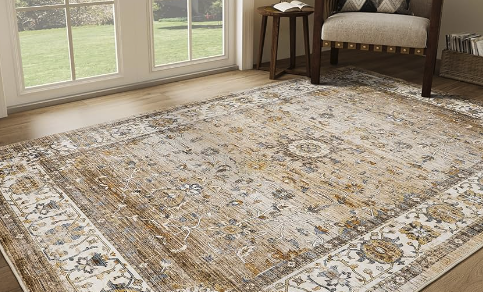When choosing a sofa for your living room, it’s important to consider the size of the space. If you have a small living room, you’ll want to choose a sofa that doesn’t overwhelm the space. Look for a compact design that still provides ample seating. On the other hand, if you have a large living room, you have the luxury of choosing a larger sofa or even a sectional to fill the space. Consider the layout of your living room and how the sofa will fit into the overall design. You’ll want to ensure that there is enough space for people to move around the sofa comfortably. Additionally, consider the scale of other furniture in the room to ensure that the sofa complements the overall aesthetic.
When considering the size of your living room, it’s also important to think about the doorways and hallways that the sofa will need to pass through in order to be placed in the room. Measure these areas to ensure that the sofa you choose can be easily maneuvered into the space. It’s also important to consider the placement of windows, doors, and other architectural features in the room, as these can impact where the sofa can be placed. By carefully considering the size of your living room and how the sofa will fit into the space, you can ensure that you choose a sofa that not only looks great but also functions well within the room.Lamolighting
Determine Your Style Preferences
Your sofa is a key piece of furniture in your living room, so it’s important to choose a style that reflects your personal taste and complements the overall design of the room. Consider the existing decor in your living room and think about whether you want your sofa to blend in with the current style or make a statement as a focal point. If you have a modern living room, you may want to choose a sleek, minimalist sofa with clean lines and a neutral color palette. For a more traditional living room, a classic sofa with elegant details and rich upholstery may be more fitting.
In addition to considering the existing decor, think about your personal style preferences. Do you prefer a more casual, relaxed look, or do you lean towards a more formal and sophisticated aesthetic? Consider factors such as the shape of the sofa, the type of legs or base it has, and any decorative elements such as tufting or nailhead trim. By determining your style preferences, you can narrow down your options and choose a sofa that not only looks great in your living room but also reflects your individual taste.
Assess Your Comfort Needs
When selecting a sofa for your living room, it’s essential to assess your comfort needs. After all, your sofa is where you’ll be spending a significant amount of time relaxing, socializing, and entertaining guests. Consider factors such as seat depth, cushion firmness, and back support to ensure that the sofa you choose is comfortable for you and your family. If you enjoy lounging and stretching out on the sofa, you may want to look for a design with deep seats and plush cushions. On the other hand, if you prefer more support while sitting upright, a sofa with firmer cushions and good lumbar support may be more suitable.
It’s also important to consider any specific comfort needs or preferences that you or your family members may have. For example, if someone in your household has back problems, you may want to prioritize finding a sofa with excellent back support. If you have pets or young children, you may want to choose a durable fabric that is easy to clean and resistant to wear and tear. By assessing your comfort needs and considering the specific requirements of your household, you can select a sofa that not only looks stylish but also provides the comfort and functionality you need.
Choose the Right Fabric or Material
The fabric or material of your sofa not only affects its appearance but also its durability and maintenance requirements. When choosing a fabric or material for your sofa, consider factors such as how it will be used, who will be using it, and how much maintenance you are willing to do. If you have pets or children, you may want to choose a fabric that is stain-resistant and easy to clean. Look for options such as microfiber or leather, which are both durable and forgiving when it comes to spills and messes.
If you prefer a more luxurious look and feel, consider velvet or silk upholstery. Keep in mind that these materials may require more maintenance and care to keep them looking their best. For a more casual and low-maintenance option, consider cotton or linen upholstery, which are both breathable and easy to clean. Additionally, if allergies are a concern in your household, consider choosing a hypoallergenic fabric or material that is resistant to dust mites and other allergens. By carefully considering the fabric or material of your sofa, you can ensure that it not only looks great but also meets your practical needs.
Decide on the Right Color
The color of your sofa plays a significant role in defining the overall look and feel of your living room. When deciding on the right color for your sofa, consider factors such as the existing color scheme of the room, your personal style preferences, and how the color will impact the mood and atmosphere of the space. If you have a neutral color scheme in your living room, consider choosing a bold or vibrant color for your sofa to add visual interest and create a focal point in the room. On the other hand, if you have a more colorful or eclectic decor, you may want to opt for a neutral or understated color for your sofa to balance out the look.
It’s also important to think about how different colors can affect the perceived size and scale of your living room. Lighter colors can make a small room feel more spacious and airy, while darker colors can create a cozy and intimate atmosphere in a larger space. Additionally, consider how different colors will complement or contrast with other elements in the room, such as wall paint, flooring, and accent decor. By carefully deciding on the right color for your sofa, you can create a cohesive and harmonious look in your living room that reflects your personal style.
Consider the Functionality of the Sofa

In addition to considering style and comfort, it’s important to think about the functionality of the sofa when making your selection. Think about how you will be using the sofa on a daily basis and what features are important to you. If you often host guests or have overnight visitors, consider choosing a sofa with a pull-out bed or sleeper option for added versatility. If you enjoy lounging and relaxing on the sofa, look for designs with adjustable headrests or reclining features for added comfort.
It’s also important to consider any additional storage needs that you may have. Some sofas come with built-in storage compartments or ottomans that provide extra space for blankets, pillows, or other items. Additionally, think about any special features or accessories that would enhance the functionality of your sofa, such as built-in USB ports for charging devices or built-in cup holders for added convenience. By carefully considering the functionality of the sofa, you can choose a design that not only looks great but also meets your specific lifestyle needs.
Set a Budget
Before starting your search for a new sofa, it’s important to set a budget that aligns with your financial situation and priorities. Sofas come in a wide range of price points, so having a clear budget in mind will help narrow down your options and make the decision-making process easier. Consider factors such as how much you are willing to invest in a quality piece of furniture, how long you plan on keeping the sofa, and any additional costs such as delivery and assembly.
When setting your budget, keep in mind that investing in a high-quality sofa can be a worthwhile long-term investment. A well-made sofa with durable construction and quality materials will not only last longer but also provide better comfort and support over time. Additionally, consider any financing options or payment plans that may be available to help make purchasing a new sofa more manageable within your budget. By setting a budget before shopping for a new sofa, you can make an informed decision that meets both your financial needs and style preferences.
In conclusion, choosing the right sofa for your living room involves careful consideration of factors such as size, style preferences, comfort needs, fabric or material, color, functionality, and budget. By taking these aspects into account and making informed decisions, you can select a sofa that not only enhances the look of your living room but also provides comfort and functionality for years to come. Whether you prefer a sleek modern design or a classic traditional look, there are countless options available to suit your individual taste and lifestyle needs. With careful planning and thoughtful consideration, you can find the perfect sofa that transforms your living room into a stylish and inviting space for relaxation and entertainment.




